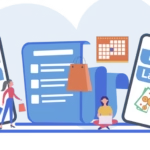-
Introduction: We Don’t Spend Rationally — We Spend Emotionally
You walk into a store to buy toothpaste, and come out with a new Bluetooth speaker, a scented candle, and a premium shampoo that smells like “forest vibes.” Sound familiar? That’s not lack of discipline — that’s consumer psychology at work.
Spending isn’t just about buying what we need — it’s about how we feel, what we aspire to, and how we want others to perceive us. Marketing giants, e-commerce platforms, and even small shops understand this better than most of us do. They use psychological tricks to make sure we spend not just more — but more often.
So, let’s break it down. Why do we end up spending on things we don’t really need? Is it emotional? Is it social? Or are we just victims of algorithmic manipulation? Spoiler: it’s all of it.
-
The Science Behind Spending Behavior
Our brains are wired for rewards, not logic. Every time you buy something, your brain releases dopamine, the feel-good chemical. That’s why shopping often feels like a high. But this high is temporary, which keeps us going back for more.
This is called the “dopamine loop” — the more you shop, the more your brain links spending with happiness. But since the happiness fades, you shop again. Welcome to the never-ending cycle of impulse buying.
-
Common Psychological Triggers Behind Unnecessary Spending
Let’s explore the exact emotional buttons that brands push to make you buy stuff you didn’t plan for.
🔹 FOMO (Fear of Missing Out)
One of the most dangerous triggers for Gen Z and millennials. Limited-time offers, flash sales, “only 2 left in stock” — these aren’t just marketing gimmicks. They hijack your brain’s scarcity bias, making you feel like you’ll lose something valuable if you don’t act now.
💡 The logic becomes: “I don’t need it, but what if I regret not buying it later?”
This fear overrides rational thinking and creates a sense of urgency that pressures you into purchasing even when you didn’t intend to.
🔹 Retail Therapy & Emotional Spending
Had a bad day? Felt rejected, lonely, or anxious? The quickest mood fix for many is shopping. It creates an instant emotional reward, even if it solves nothing long term.
💡 Emotional spending is when you’re buying with your heart, not your head.
This kind of spending is reactionary and often leads to guilt later. Brands know this — that’s why you’ll find comforting, cozy, luxurious branding especially around festivals, breakups, or stressful events.
🔹 Social Comparison & Status Buying
Instagram. Reels. Influencers. Your classmate got a new iPhone. Your colleague’s wearing Air Jordans. You weren’t thinking of buying anything… until you felt behind. And suddenly, spending becomes a way to “catch up”.
This is called status signaling — buying things to fit in, show off, or elevate social image. In psychology, it’s linked to self-worth, and it’s deeply powerful, especially in a status-driven society like India.
🔹 Anchoring Bias
This is when your brain gets “anchored” to the first price it sees. Let’s say a hoodie is shown as ₹3,000, then “discounted” to ₹1,499. It feels like a deal. But in reality, the seller may have inflated the price only to anchor your perception.
Anchoring makes you overvalue discounts and buy things just because they seem cheaper, even if you don’t need them.
🔹 Easy Credit Access
With BNPL (Buy Now Pay Later), credit cards, and EMI options everywhere, spending no longer feels real. You’re not paying with cash, you’re just clicking. And digital transactions disconnect your brain from the pain of paying, making you spend more.
💡 This is called the “pain of paying” effect — and digital wallets reduce it drastically.
It’s why ₹500 on UPI feels lighter than handing over a ₹500 note.
-
Real-Life Examples of Everyday Overspending
Let’s take a few relatable Indian scenarios where psychology plays you:
🔸 Zomato Gold Offer – You buy a membership you never fully use, just because you think you’re saving on food orders.
🔸 Swiggy Pop-Ups – The ₹199 meal feels cheap. But order 3-4 in a week, and boom — you’ve spent ₹1,000 eating outside.
🔸 Big Billion Days – You buy Bluetooth speakers, smart lights, and fitness bands — none of which you needed.
🔸 Influencer Product Drops – You trust a creator, they “recommend” a product, and you add to cart. Emotional loyalty converts into impulse spending.
-
Why Our Brains Keep Falling for It
Our ancient brains haven’t evolved to handle modern marketing warfare. We evolved for scarcity — not abundance. That’s why we get excited about deals, discounts, and more choices.
Plus, brands now use AI and behavior data to show you exactly what tempts you. Ever noticed how that one thing you glanced at on Amazon now follows you on Instagram, YouTube, and random websites? That’s behavioral targeting.
It’s no longer just “you looking for things to buy” — it’s things looking for you.
-
How to Outsmart Your Own Brain: Practical Solutions
Alright, time to break free from the psychological spending trap. Here’s how you can stay ahead of your own impulses:
1. Delay Before You Pay
Wait 24 hours before buying anything that isn’t essential. If you still want it after a day, go for it. But most urges fade fast.
2. Make a Wishlist, Not a Cart
Create a wishlist instead of immediately adding to cart. It feels like a commitment but gives you time to evaluate.
3. Block Temptation Zones
Unfollow shopping pages, unsubscribe from promotional emails, and delete apps that trigger you into spending unnecessarily.
4. Track Your Mood While Shopping
If you’re bored, sad, or stressed — don’t shop. Emotional tracking apps like “Reflectly” can help you correlate spending habits with mood swings.
5. Use Cash or Debit for Non-Essentials
Paying with actual cash or debit card activates pain of paying and keeps you grounded in reality.
6. Budget for Guilt-Free Fun
Don’t kill all fun. Set aside a monthly “splurge budget” — even ₹1,000. That way, you scratch the itch without going overboard.
-
Final Thoughts: Awareness Is the First Step to Financial Freedom
You’re not stupid for spending on things you don’t need. You’re just human — and you’re being targeted 24/7 by the most advanced psychological tools in the world. But once you understand the game, you can win it.
Spending money isn’t bad. Unconscious spending is.
The goal isn’t to become a monk — it’s to spend intentionally, not emotionally.
So the next time your finger hovers over “Buy Now,” just ask yourself:
Do I want this — or did they make me want this?




